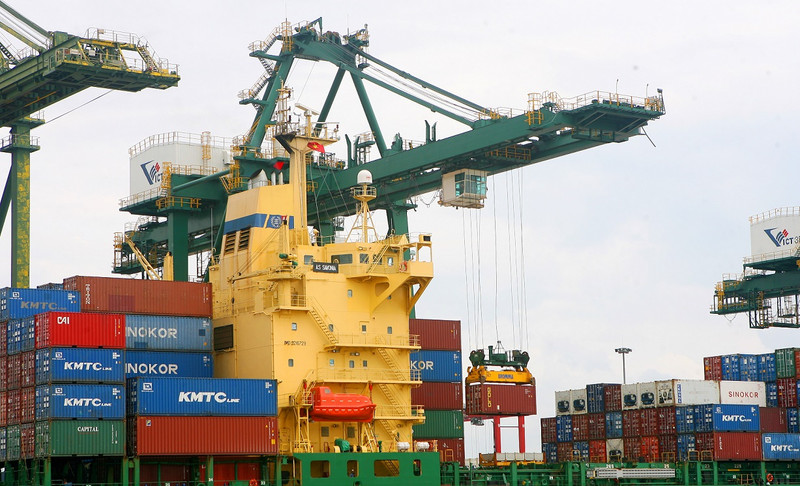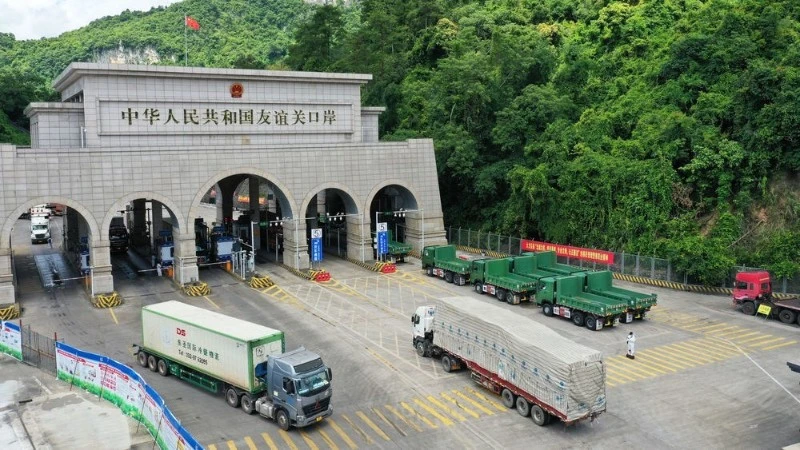The Vietnamese economy rose to 4.14% in the second quarter of this year, after climbing to 3.32% in the first quarter. In the first six months of the year, it ascended 3.72%, lower than the year-on-year growth rate of 6.42% in the corresponding period last year.
“The economy has bounced back gradually on account of the government’s efforts in helping businesses out of difficulties, and enterprises’ growing confidence in the domestic business and the investment climate increasingly improved,” said Nguyen Thi Huong, general director of the General Statistics Office (GSO).
However, with such a 3.72% growth rate for the first half of 2023, bigger efforts must be made to reach the growth target of 6.5%, set by the National Assembly this year.
The Ministry of Planning and Investment (MPI) is now updating its new growth scenarios for the second half of 2023, which will be submitted to the government soon. In its latest scenarios announced recently, the MPI forecasts that under the first scenario, the economy will grow 6% for the whole year, and the rate will be 6.5% under the second scenario, which will only become true providing there are no bigger challenges and more new solutions must be applied, to continue lifting enterprises and people out of difficulties.
Over a week ago also, the Vietnam Institute for Economic and Policy Research issued three growth scenarios for Vietnam this year, forecasting 5.5% under the low scenario, 6% for the medium scenario, and 6.5% for the high scenario.
Bouncing back
The GSO reported that as compared to the same period last year, the added value of the whole industrial sector declined 0.75% in Q1 but rose to 1.65% in Q2, leading to a rate of 0.44% in this year’s first half.
In the first half of this year, the growth rate of the mining sector dropped 1.43% year-on-year, while the manufacturing and processing sector – which creates 80% of industrial growth – climbed 0.37% year-on-year (-0.49% in Q1 and 1.18% in Q2).
Some key economic sectors have witnessed a rise in performance in the first six months of this year.
For example, state-owned Vietnam National Coal and Mineral Industries Group reported last week, that its total revenue is estimated to be more than 87 trillion VND (3.62 billion USD) – up 7% year-on-year. In which the coal revenue reached 56.5 trillion VND (2.35 billion USD) – up 11.2% year-on-year, and revenue from some business activities sat at 1.4 trillion VND (58.3 million USD) – up 4.5% year-on-year.
In another case, state-run Electricity of Vietnam (EVN) last week reported that its six-month electricity sales revenue is valued at over 224.28 trillion VND (USD 9.34 billion) – up 3.66% year-on-year.
As compared to the same period last year, in the first half of 2023, EVN’s gross industrial output is estimated to hit 194 trillion VND (8.08 billion USD) – up 1.77%. Electricity produced and purchased is estimated to be over 131 billion kWh, up 1.63%.
EVN’s commercialised electricity is estimated to total 118.92 billion kWh, a 1.77% year-on-year rise. Electricity for agro-forestry-fishery activities climbed by 13%, electricity for industrial and construction activities was reduced by 4.07%, and electricity for households expanded by 8.61%. Electricity for hotels increased by 14.1%.
According to the GSO, in the first six months, the economy’s production and distribution of electricity increased by 1.79%, as compared to the 0.8% expansion year-on-year in the first five months.
However, difficulties have hit the state-owned Vietnam Oil and Gas Group (PetroVietnam) hard. Last week this group reported that its total six-month revenue is estimated to be over 348.62 trillion VND (14.52 billion USD), down 8% year-on-year.
PetroVietnam’s production of some key products decreased year-on-year, such as crude oil (5.31 million tonnes – down 2%); and the production of nitrate (874,700 tonnes – down 6%). Moreover, PetroVietnam’s consumption of some products also shrank, such as liquefied petroleum gas (3%), crude oil (3%), and condensate (25%).
Nevertheless, this group’s six-month production of electricity hit 8.36 million kWh – up 17% year-on-year, and production of assorted petrol and gasoline touched 3.54 million tonnes – up 5%, as compared to the same period last year.
According to the GSO, in the first two quarters of this year, enterprise performance in the economy was difficult. Vietnam saw more than 75,900 newly established businesses registered at 707.5 trillion VND (29.48 billion USD), using nearly 509,900 workers, down 0.5%, 19.8%, and 1% respectively, compared to the corresponding period last year.
If another 958.7 trillion VND (39.94 billion USD) registered by nearly 25,200 operational enterprises is included, the total capital supplemented into the economy in the period was close to 1.67 quadrillion VND (69.42 billion USD). What is more, as many as 37,700 businesses also resumed their operations.
“These figures show the great efforts of the business community in the context of increasing difficulties,” said Huong of the GSO. “In the first half of the year, the total number of enterprises newly established and resuming operations hit 113,600, down only 2.9% year-on-year.”
Last week, the GSO released the results of its Q2 survey on manufacturing and processing enterprises. A total of 43.3% of respondents said their third-quarter performance will improve over the second quarter.
However, it also stated that in the first six months of this year, there were 60,200 businesses halting operations and 31,000 enterprises awaiting disbandment. Each month saw an average of 16,700 enterprises withdraw from the market.
Exploring a way out
Last week, MPI Minister Nguyen Chi Dung reported at the government’s cabinet meeting on Vietnam’s socioeconomic situation, that the main difficulties facing enterprises include a lack of output markets, difficult access to loans, cumbersome administrative procedures, and a need for a better business and investment environment.
“Input costs and costs for compliance with legal regulations, and costs for access to the market are still very high. Enterprises’ difficulties are directly causing issues of employment, incomes, and livelihood of labourers,” he said. “These issues have received special attention from the government, which has enacted a series of pro-business policies regarding the reduction of lending rates, borrowing conditions, taxes, and fees.”
“In the coming time, the government will continue enacting new effective policies to timely assist businesses and people to fuel economic growth,” Minister Dung stressed.
On June 24, the NA voted to continue the reduction of the VAT by 2% from July 1, through December 31, 2023. Specifically, goods and services which are currently subject to 10% VAT shall be entitled to a reduced VAT rate of 8%, except for some types of goods and services including telecommunications, IT services; finance and banking services, securities, and insurance; real estate business; metal production and manufacture of prefabricated metal products; mining industry (excluding coal mining), production of coke, refined petroleum, production of chemicals and chemical products; and goods and services which are subject to special sales tax.
In another example, the government has cut car registration fees in half for locally-manufactured or assembled automobiles in the hope of boosting sales. The 6-month cut takes effect July 1 and the fees will return to normal starting January 1, 2024.
Registration fees are calculated based on automobile prices in each locality. The rates are 12% in Hanoi and Hai Phong, and 10% in Ho Chi Minh City.
Vietnam issued a similar 50% reduction for six months in 2020 and 2022, to boost consumption. The move caused sales to double in both cases.
First-six-month economic growth since 2010 (Unit: % year-on-year)
Source: General Statistics Office
2010 6.16
2011 5.57
2012 4.93
2013 4.9
2014 5.18
2015 6.28
2016 5.52
2017 5.73
2018 7.08
2019 6.76
2020 1.81
2021 5.64
2022 6.42
2023 3.72
















